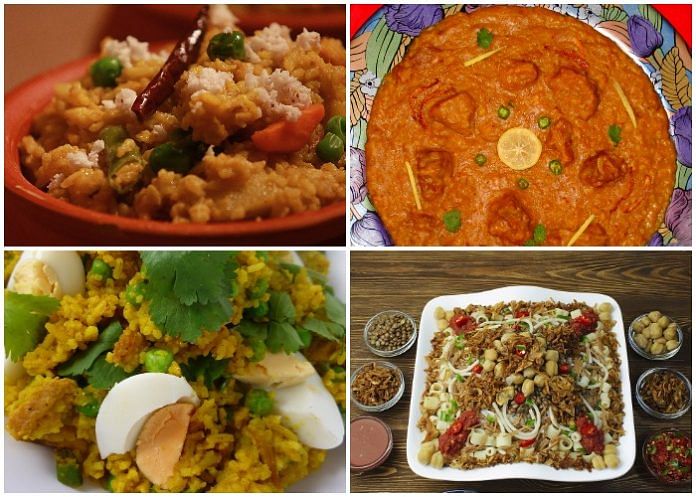The unassuming khichdi has been quite a world traveller for centuries, finding itself in places as diverse as Britain, Egypt, and Fiji.
The humble khichdi caused a lot of confusion on Twitter on Wednesday when it was erroneously reported that it was going to be knighted as India’s ‘national dish’. Then we learnt that at the government’s World Food India event, khichdi had been selected as ‘Brand India Food’.
But the reactions to putting khichdi on any national pedestal were diverse: some mourned the death of a pluralistic India, others opined that the country must be falling ill.
Food processing minister Harsimrat Kaur Badal was not wrong about khichdi being present in most corners of the country. But that is not all, the unassuming khichdi has been quite a world traveller.
Forget chicken tikka masala, khichdi reached Britain first. A popular breakfast and lunch dish, the ‘kedgeree’ is boiled rice, fish, eggs, parsley, and that ominous British thing called ‘curry powder’. A Scottish recipe of kedgeree is found in a 1790 book by Stephena Malcolm, which uses cayenne pepper instead. Food historians argue that it was either the British colonial officers and their families or Scottish soldiers who brought back the khichdi because it suited their bland palette.
In Egypt, khichdi took a funky turn. Nineteenth century Egypt was seeing a change in its demographic, and becoming more multicultural, propelled by an economic boom. As in most economic changes, cultural elements undergo hybridisation too. So today, Egyptians enjoy a spicy dish called ‘kushari’, which is a made with rice and lentils (Indian) and macaroni (Italian).
Under colonial rule, many Indian indentured labourers were sent to Fiji to work on sugarcane plantations. This lead to khichdi also crossing the ocean to become a common dish on the Fiji islands. When cultures mix, so does food. For instance, the Caribbean fast food is the roti-wrap.
In India, khichdi has existed for centuries. A moong khichdi was mentioned by Ibn Battuta, the Moroccan scholar who travelled to India in the 14th century.
Ain-e-Akbari from the 16th century offered complex descriptions of artillery and administrative advice, but also featured a khichdi recipe that required one equal part each of dal, rice, and ghee. A shorter route to cholesterol, modern man would say.
As with most things, the Mughals upped the game with khichdi. Nuts, spices, fruits, and koftas now embellished this humble rice and lentil dish. Jahangir’s comfort dish was the Gujarati version of the khichdi known as Lazizan, wrote late food historian T.K. Acharya.
The Bengali khichuri, Kannadiga bisi bele bhaat, Tamil pongal, Haryanvi khichri made with bajra, and the Odiya adahengu khechidi are just some of the variations available.
Khichra is the meat variant of the ‘pure veg’ khichdi. Similar to the haleem, khichra replaces cubes of meat with minced meat. It finds mention in ancient Arabian cook books and is also a delicacy in Pakistan. Hyderabad and Bengal too have meat varieties of this dish. Many recipes of khichdi use meat, but I do not think that would fit in India’s ‘food ambassador’ requirement.
The dish of two humble ingredients can give birth to a lot of ‘double, double, toil and trouble’ – it all depends on who is stirring the pot.
What kind of khichdi will Sanjeev Kapoor cook in his 800 kilo dish at World Food India? Will it be a majoritarian blanketing of a diverse culture, like the tyranny of the tandoor?







Such a delectably put together article. Never knew such variants ever existed. Quite amusing.